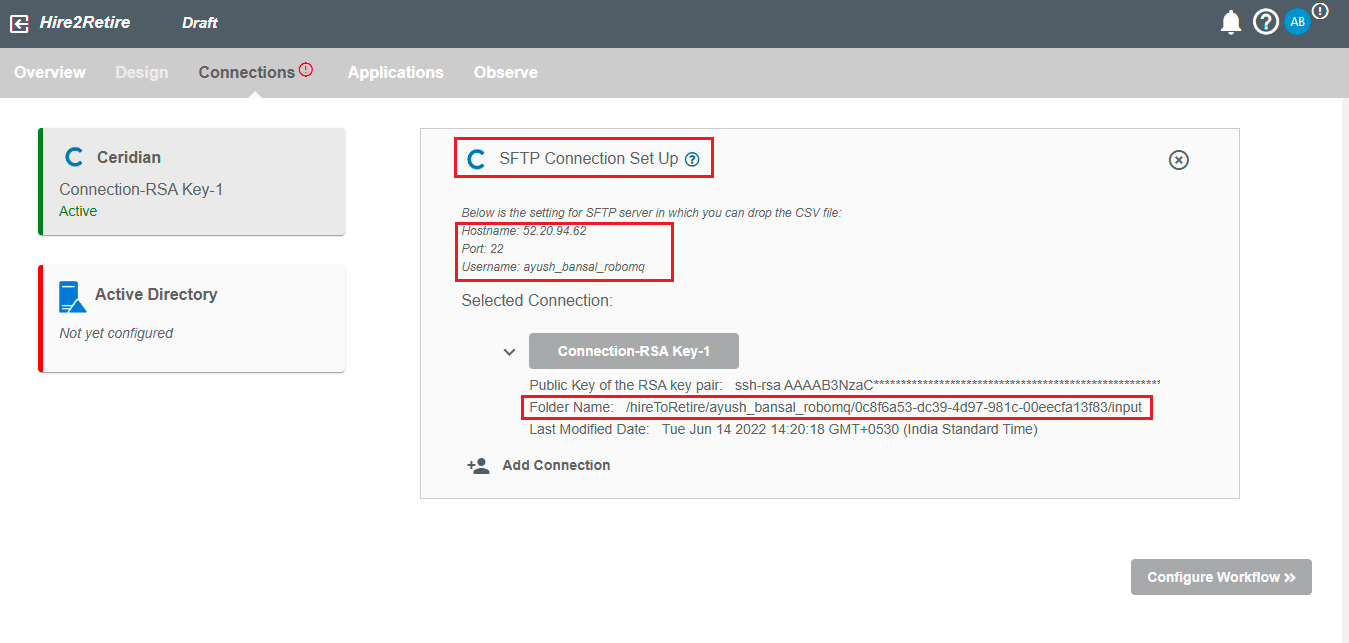Ceridian-Data-Extract
Introduction¶
Ceridian is an HCM application for storing and managing Employees. Hire2Retire will help Ceridian users automatically sync employee data to Active Directory for the entire employeement lifecycle.
Getting Your HR Data¶
Hire2Retire will use File Based Extract to obtain employee data form Ceridian instances. SFTP Connection is required.
Hire2Retire requires the following details to create a connection with your Ceridian server:
-
Connection Name - A user-defined nomenclature for your connection. By default, the connect name is "Connection-RSA Key", you can change the name as per your preference.
-
Public Key of the RSA key pair - The public key of your RSA key pair (SSH key). In order to connect Ceridian to SFTP, you must provide the public key of the Ceridian RSA key pair (SSH key).
-
Folder Name - A new folder for the current workflow will be created by default. You can also select folders using dropdown option from existing workflows.

Testing your SFTP upload before going live¶
During the testing phase of your workflow, you can simply upload HR reports directly from your local environment using your own RSA key. Learn How to create RSA key pairs on MacOS or Linux
How to connect to the Hire2Retire SFTP server to drop the HR Data¶
Once the Connection is configured on Hire2Retire, you can configure details on Ceridian. The following details are provided on Hire2Retire.
-
Hostname - The host name provided is the IP address of Hire2Retire SFTP Server.
-
Port - The TCP/IP port on which the Hire2Retire SFTP server is listening.
-
Username - SFTP username to connect to the Hire2Retire SFTP server.
-
Folder Name - SFTP folder for the current workflow. Your HR system should put files here for Hire2Retire to listen for the incoming extract files.

Configuration¶
Detailed configurations can be found in HR Data Definition
Once you have successfully configured the connections, you can continue with the Design section to configure the rest of the workflow following these steps in order.
- HR Data Definition
- Lifecycle Business Rules
- Employment Status
- HR to AD Profile Map
- Organizational Unit Assignment - Only defined in on-premise Active Directory
- Security Group Assignment
- Distribution List Assignment
Deployment¶
Once your workflow has been setup, you have two optional features you can setup before deploying it.
Otherwise, you can proceed to deploy and test it on the Hire2Retire platform, see Deploy and Test Flow